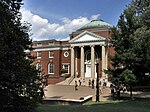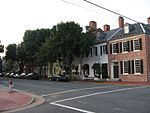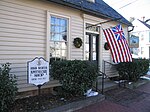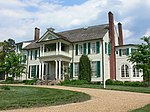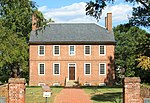Mary Washington Hospital
Buildings and structures in Fredericksburg, VirginiaHospitals in VirginiaSouthern United States hospital stubsVirginia building and structure stubs

Mary Washington Hospital is a 451-bed, full-service hospital in Fredericksburg, Virginia. It is one of seven level II trauma centers in Virginia and was ranked 6th best in the state by U.S. News & World Report.
Excerpt from the Wikipedia article Mary Washington Hospital (License: CC BY-SA 3.0, Authors, Images).Mary Washington Hospital
Sam Perry Boulevard, Fredericksburg
Geographical coordinates (GPS) Address Phone number Website External links Nearby Places Show on map
Geographical coordinates (GPS)
| Latitude | Longitude |
|---|---|
| N 38.31099 ° | E -77.48355 ° |
Address
Mary Washington Hospital
Sam Perry Boulevard 1001
22401 Fredericksburg
Virginia, United States
Open on Google Maps


